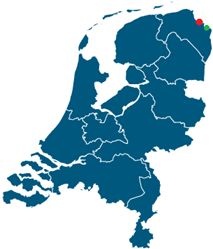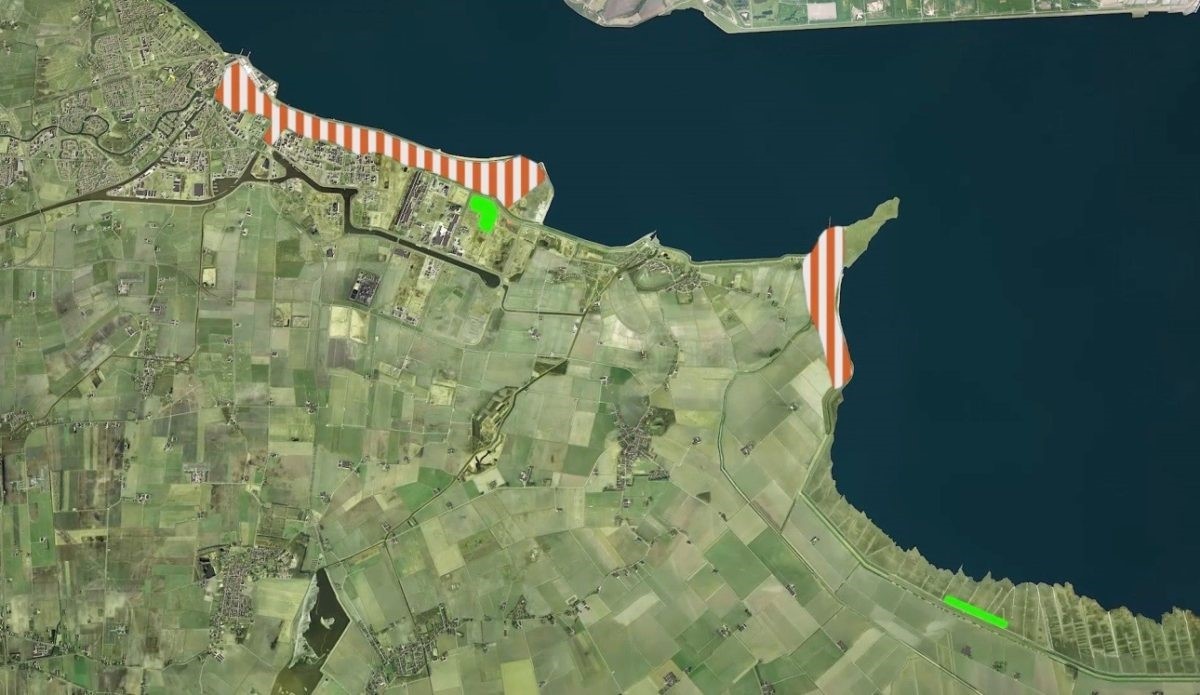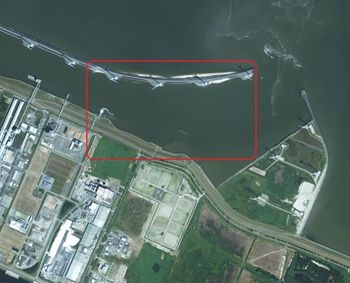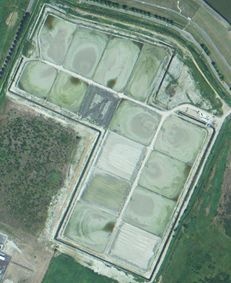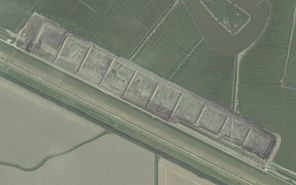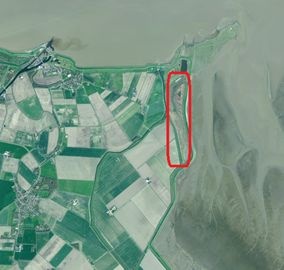Planning and Design
In 2018, two depots are filled with fine dredged sediments. The sediments in both depots are transformed into clay soil by means of processes such as dewatering, desalination and oxidation of residual organics. The depots are located close to a location with a dike that needs to be reinforced in the near future, so that soil transport costs will be minimal.
Setting up two depots
Activities in the field started in 2018 by setting up two depots and filling these with fine sediments by pumping of dredged material (see figure 2 in section ‘Operation and Maintenance Phase’).
One depot is for ripening dredged sediments from the Zeehavenkanaal, the channel leading to the port of Delfzijl. This depot is located just behind the sea dike (figures 1.1 and 1.2). The other depot is located further east, outside the sea dike on the salt marsh, and will be filled with sediment dredged from the Breebaart polder near Termunten (figures 1.1. and 1.3), a polder that inundates with the tides and is thus filled with sediment continuously, as a kind of silt-trap.
Testing different ripening approaches
The sediments in both depots are transformed into clay soil by means of processes such as dewatering, desalination and oxidation of residual organics.
Each depot will contain 10-15 cells (see figure 3 in in section ‘Operation and Maintenance Phase’) that allow for testing different ripening approaches. The clay soil is predicted to have ripened sufficiently by 2021, at which time it will be suitable for application.
Depots located near the future dike reinforcement
The location of the depots along and outside the Dollard sea dike are carefully chosen, because this section of the dike needs to be reinforced in the near future. Hence, transport costs will be reduced to an absolute minimum here. The two locations together consist of 25 cells of ca 100×100 m in which different ripening strategies will be executed.
